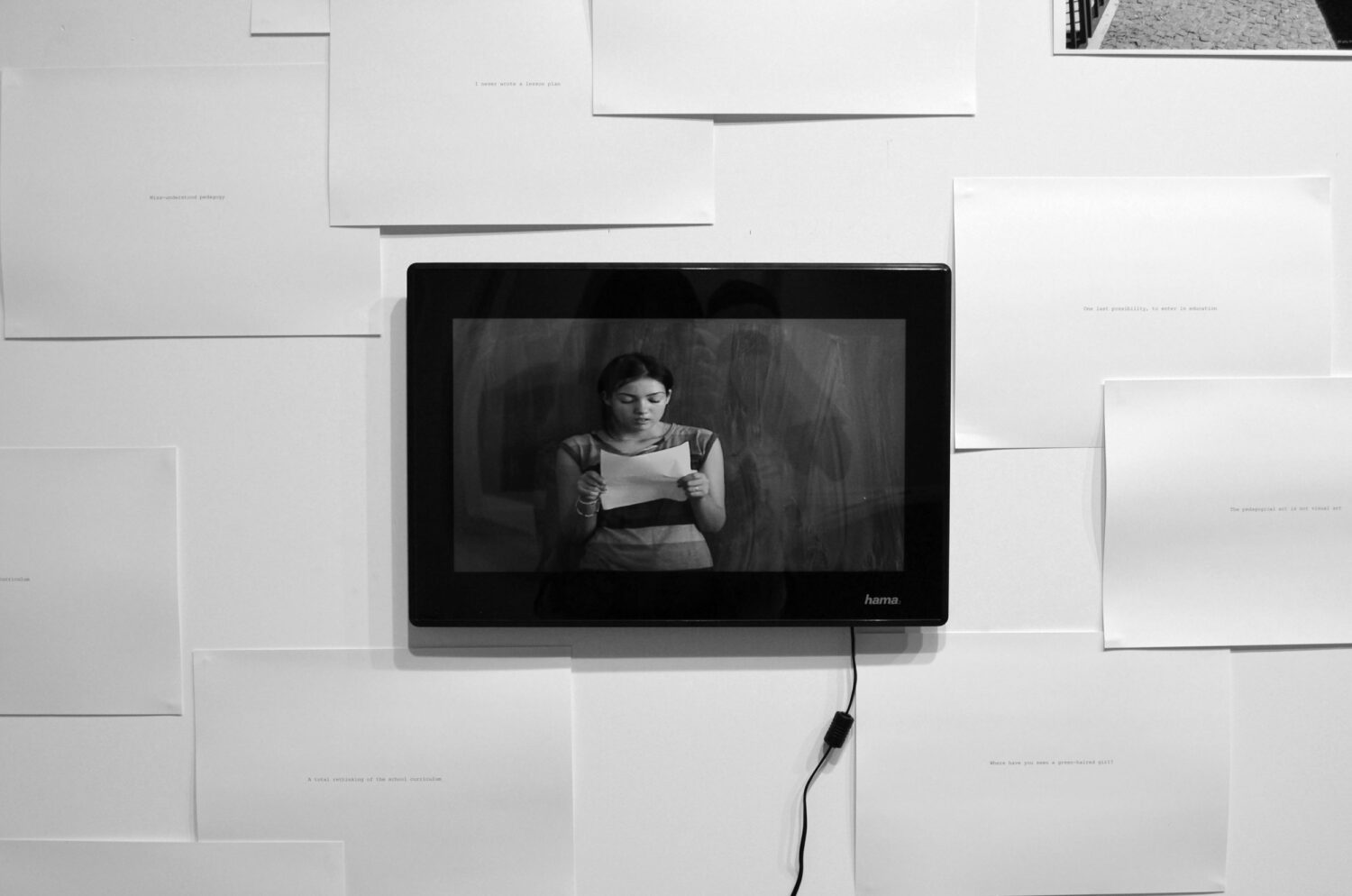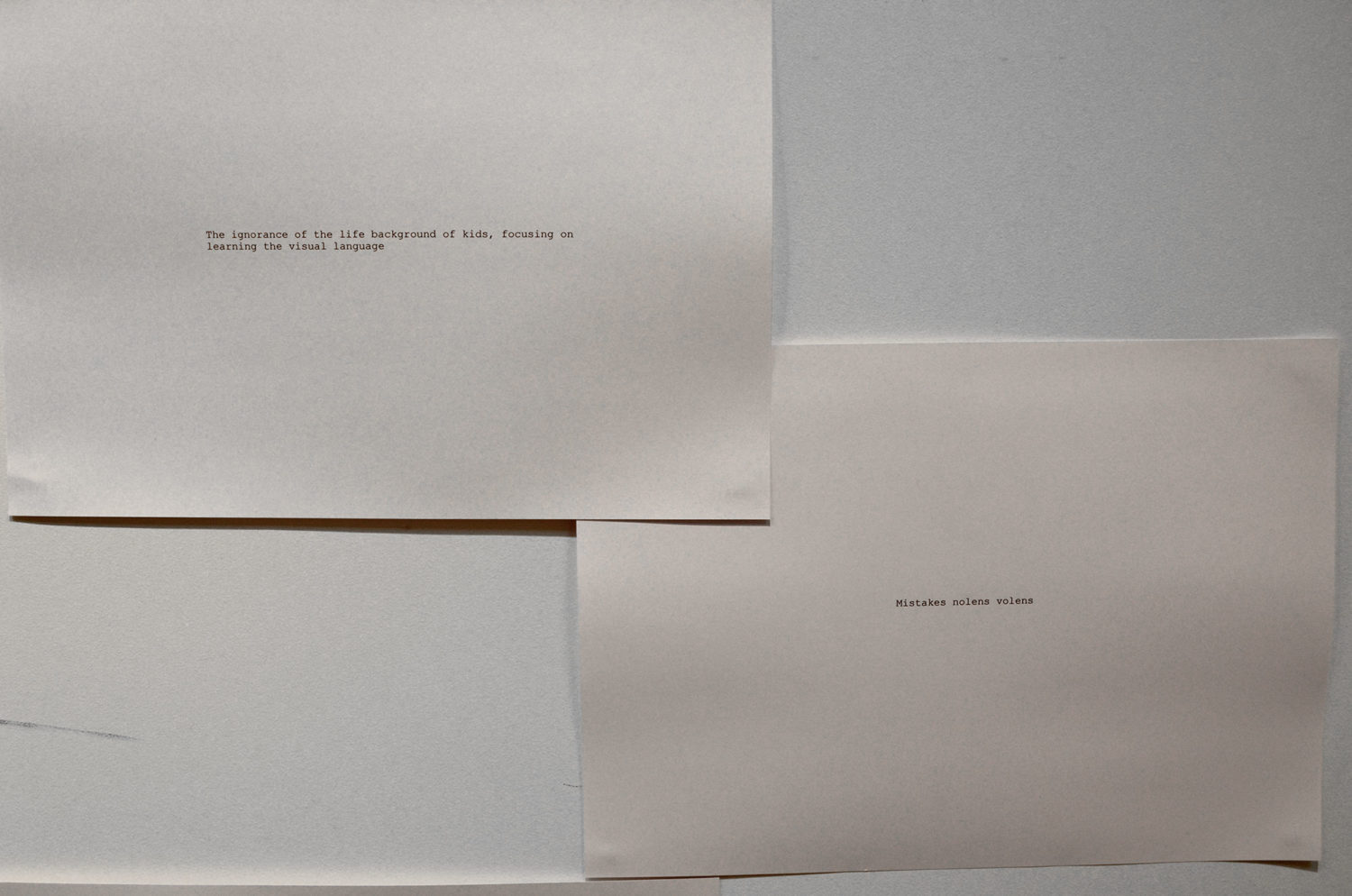
“The diary of a discussion about education” and others things refers to the Plastic Education (Fine Art Education) subject matter in general secondary compulsory education. It is the only subject that would familiarize students with visual arts and prepare an informed audience for the current cultural context. In 2014 this discipline was still focusing on practical skills, national school curricula proposed formal exercises for making art works using visual language elements (painting and drawing) without any connection to the current cultural, social context and art. The evaluation at this subject matter is based on quantifiable products in which the elements of visual language are the most standardized criteria. The pupil, the human subject and his context are lacking, also the critical thinking trough art and the personal development. For this reason, contemporary and recent art is not made known at all, it is also not brought in the didactic strategy, the art that is constantly referred to in the case of this subject matter is the classical and modern western art focusing on the most known art works.
The installation comprises a series of short texts extracted from the artist’s conversations with Plastic Education teachers. The texts compose an image of the insecurity and uncertainty of the teachers who teach this subject, even if most of them are artist teachers and their pedagogical activity is extremely creative. This is probably the weakness of education that Gert Biesta talks about in his famous work “The beautiful risk of education”.
„The risk aversion that pervades contemporary education puts teachers in a very difficult position. While policy makers and politicians look at education in the abstract and from a distance and mainly see it through statistics and performance data that can easily be manipulated and about which one can easily have an opinion, teachers engage with real human beings and realize at once that education cannot be “fixed” that simply—or that it can only be “fixed” at a very high price. The desire to make education strong, secure, predictable, and risk-free is in a sense an attempt to wish this reality away. It is an attempt to deny that education always deals with living “material,” that is, with human subjects, not with inanimate objects. The desire to make education strong, secure, predictable, and risk-free is an attempt to forget that at the end of the day education should aim at making itself dispensable—no teacher wants their students to remain eternal students—which means that education necessarily needs to have an orientation toward the freedom and independence of those being educated.” Gert Biesta -The beautiful risk of education


















